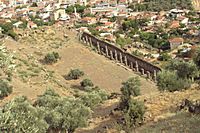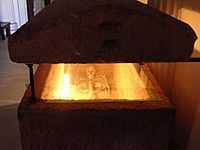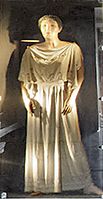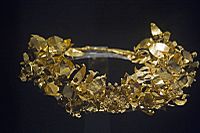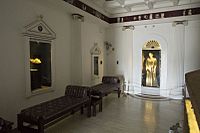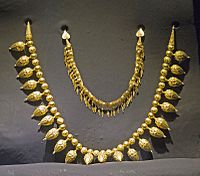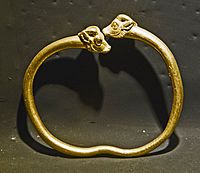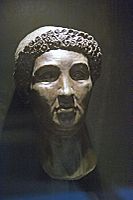Ada of Caria facts for kids
Quick facts for kids Ada |
|
|---|---|
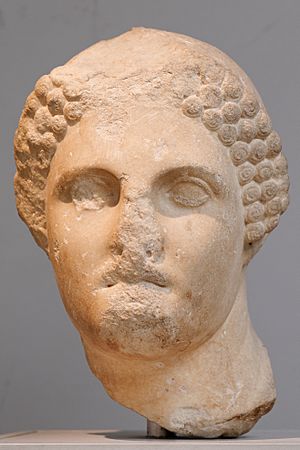
Portrait of a young woman from the Mausoleum at Halicarnassus, sometimes identified as Ada. British Museum.
|
|
| Reign | 344–340 BC; 334-326 BC |
| Satrap of Caria | |
| Predecessor | Idrieus |
| Successor | Pixodarus |
| Queen of Caria | |
| Predecessor | Orontobates |
| Successor | Alexander III (the Great) of Macedon |
| Born | 4th century BC Muğla, Persian Empire (modern-day Muğla, Turkey) |
| Died | 326 BC Halicarnassus, Caria (modern-day Bodrum, Muğla, Turkey) |
| Consort | Idrieus |
| House | Hecatomnids |
| Father | Hecatomnus |
Ada of Caria (Ancient Greek: Ἄδα) lived from about 377 BC to 326 BC. She was an important ruler of Caria, a region in ancient Anatolia (modern-day Turkey). Ada belonged to the Hecatomnids family, which was powerful in Caria. She first ruled as a governor (called a Satrap) for the Persian Empire. Later, she became Queen of Caria with the help of Alexander the Great.
Contents
Ada's Family and Early Rule
Ada was the daughter of Hecatomnus, who was also a satrap of Caria. She had four siblings: Mausolus, Pixodarus, Artemisia, and Idrieus. It was common for royal families back then to marry within the family. Mausolus married Artemisia, and Ada married her brother Idrieus. Pixodarus married someone from outside the family.
All of Hecatomnus's children ruled Caria at some point. Mausolus and Artemisia ruled together first. After Mausolus died, Artemisia ruled alone until 344 BC.
Idrieus and Ada then ruled Caria together for four years. They had strong connections with the Greek world. They were known for donating to important Greek temples, like the Temple of Athena in Tegea and the sanctuary at Delphi.
After Idrieus died, Ada became the sole satrap of Caria. However, her brother Pixodarus forced her out in 340 BC. When Pixodarus died in 335 BC, his son-in-law, a Persian named Orontobates, took over. Ada had to flee to a strong fortress called Alinda. She continued to rule from there, even though she was in exile.
Ada and Alexander the Great
In 334 BC, Alexander the Great arrived in Caria. Ada met him and offered him her fortress, Alinda. She also adopted Alexander as her son. Alexander accepted her offer. In return, he put Ada in charge of the important Siege of Halicarnassus.
The Siege of Halicarnassus
Halicarnassus was the capital city of Caria. It was a very strong city, and Alexander needed to capture it to control the region. Adas knowledge of the area and her popularity with the local people were very helpful to Alexander.
After Halicarnassus was captured, Alexander gave Alinda back to Ada. He then made her the Queen of all Caria. Because the people of Caria loved Ada, they became loyal to Alexander. This helped Alexander greatly in his conquests.
The ancient historian Arrian wrote about this event:
"Ada meanwhile held only Alinda, the strongest fortress in Caria; and when Alexander entered Caria she went to meet him, surrendering Alinda and adopting Alexander as her son. Alexander gave Alinda to her charge, and did not reject the title of son, and when he had taken Halicarnassus and became master of the rest of Caria, he gave her command of the whole country."
—Arrian, Anabasis, 1.23.8
Ada was later protected by Asander, who was a Greek governor (satrap) of Lydia.
Ada's Tomb and Legacy
Some Turkish archaeologists believe they have found Ada's tomb. However, this claim is still being discussed. If it is truly her tomb, her remains are on display at the archaeological museum in Bodrum, Turkey.
-
Purported skeleton of Ada, Bodrum Museum of Underwater Archaeology
See also
 In Spanish: Ada de Caria para niños
In Spanish: Ada de Caria para niños


